Real-Time Solar Power Generation Scheduling for Maintenance and Suboptimally Performing Equipment Using Demand Response Unified with Model Predictive Control
Abstract
:1. Introduction
- Designing a novel framework to optimize the scheduling of maintenance of real-time solar power generation by combining DR with MPC.
- Creating advanced real-time algorithms using Python (Visual Studio Code) for scheduling the maintenance and the replacement of solar power generation equipment.
- Identifing equipment that is not performing at its optimal level to enhance the efficiency and reliability of the solar power system.
2. Site Background
3. Overall Model Development
3.1. Solar Energy Production Model
3.2. Formulation of the Mean Values Using Model Predictive Control (MPC)
3.3. Modeling of the Relationship between Solar Module Temperature, Surrounding Temperature, and Irradiation
3.3.1. Statistical Correlation Model
3.3.2. Empirical Model
3.3.3. Efficiency Model
3.4. System Model Using MPC for Maintenance Scheduling
3.5. Maintenance Cost Function
4. Result and Analysis
4.1. Mean Values
4.2. Correlation between Solar Module Temperature and Surrounding Temperature
4.3. Correlation between Solar Module Temperature and Irradiation
4.4. The Efficiency of DC to AC Conversion
4.5. Solved Maintenance Schedules Using Real-Time Data
5. Conclusions
Author Contributions
Funding
Data Availability Statement
Conflicts of Interest
References
- Jha, K.; Shaik, A.G. A comprehensive review of power quality mitigation in the scenario of solar PV integration into utility grid. e-Prime—Adv. Electr. Eng. Electron. Energy 2023, 3, 100103. [Google Scholar] [CrossRef]
- Almaita, E.; Abdelsalam, E.; Almomani, F.; Nawafah, H.; Kassem, F.; Alshkoor, S.; Shloul, M. Impact study of integrating solar double chimney power plant into electrical grid. Energy 2023, 265, 126350. [Google Scholar] [CrossRef]
- Zhu, J.; Nutakki, T.U.K.; Singh, P.K.; Abdullaeva, B.S.; Zhou, X.; Fouad, Y.; Alzubaidi, L.H. Sustainable off-grid residential heating and desalination: Integration of biomass boiler and solar energy with environmental impact analysis. J. Build. Eng. 2024, 87, 109035. [Google Scholar] [CrossRef]
- Chakraborty, N.; Choudhury, N.B.D.; Tiwari, P.K. Profit Maximization of Retailers with Intermittent Renewable Sources and Energy Storage Systems in Deregulated Electricity Market with Modern Optimization Techniques: A Review. Renew. Energy Focus 2023, 47, 100492. [Google Scholar] [CrossRef]
- Salam, I.U.; Yousif, M.; Numan, M.; Billah, M. Addressing the Challenge of Climate Change: The Role of Microgrids in Fostering a Sustainable Future—A Comprehensive Review. Renew. Energy Focus 2024, 48, 100538. [Google Scholar] [CrossRef]
- Dalapati, G.K.; Ghosh, S.; Sherin, P.A.T.; Ramasubramanian, B.; Samanta, A.; Rathour, A.; Wong, T.K.S.; Chakrabortty, S.; Ramakrishna, S.; Kumar, A. Maximizing solar energy production in ASEAN region: Opportunity and challenges. Results Eng. 2023, 20, 101525. [Google Scholar] [CrossRef]
- Wanyama, J.; Soddo, P.; Nakawuka, P.; Tumutegyereize, P.; Bwambale, E.; Oluk, I.; Mutumba, W.; Komakech, A.J. Development of a solar powered smart irrigation control system Kit. Smart Agric. Technol. 2023, 5, 100273. [Google Scholar] [CrossRef]
- Kaluthanthrige, R.; Rajapakse, A.D. Demand response integrated day-ahead energy management strategy for remote off-grid hybrid renewable energy systems. Int. J. Electr. Power Energy Syst. 2021, 129, 106731. [Google Scholar] [CrossRef]
- Sharda, S.; Sharma, K.; Singh, M. A real-time automated scheduling algorithm with PV integration for smart home prosumers. J. Build. Eng. 2021, 44, 102828. [Google Scholar] [CrossRef]
- Falope, T.; Lao, L.; Hanak, D.; Huo, D. Hybrid energy system integration and management for solar energy: A review. Energy Convers. Manag. X 2024, 21, 100527. [Google Scholar] [CrossRef]
- Institute of Electrical and Electronics Engineers. 2019 IEEE Canadian Conference of Electrical and Computer Engineering (CCECE); IEEE: Edmonton, AB, Canada, 2019. [Google Scholar]
- Wang, W.; Guo, Y.; Yang, D.; Zhang, Z.; Kleissl, J.; van der Meer, D.; Yang, G.; Hong, T.; Liu, B.; Huang, N.; et al. Economics of physics-based solar forecasting in power system day-ahead scheduling. Renew. Sustain. Energy Rev. 2024, 199, 114448. [Google Scholar] [CrossRef]
- Ullah, Z.; Qazi, H.S.; Rehman, A.U.; Hasanien, H.M.; Wang, S.; Elkadeem, M.R.; Badshah, F. Efficient energy management of domestic loads with electric vehicles by optimal scheduling of solar-powered battery energy storage system. Electr. Power Syst. Res. 2024, 234, 110570. [Google Scholar] [CrossRef]
- Raj, R.P.; Kowli, A. Handling forecast uncertainty and variability in solar generation to mitigate schedule deviation penalties. Sol. Energy 2024, 271, 112401. [Google Scholar] [CrossRef]
- Basu, M.; Das, S. Short-term pumped storage hydrothermal generation scheduling considering uncertainty of load demand and renewable energy sources. J. Energy Storage 2023, 70, 107933. [Google Scholar] [CrossRef]
- Almutairi, A.; Albagami, N.; Almesned, S.; Alrumayh, O.; Malik, H. A novel optimal framework for scheduling rooftop solar home appliances considering electricity, real pricing and user comfort. Sol. Energy 2023, 262, 111876. [Google Scholar] [CrossRef]
- Amjad, K.; Javeed, M.R.; Umar, M.; Khalid, M.S.; Gelani, H.E.; Dastgeer, F. ANN based optimization of price-based demand response management for solar powered nanogrids. In Proceedings of the Proceedings—2020 23rd IEEE International Multi-Topic Conference, INMIC 2020, Bahawalpur, Pakistan, 5–7 November 2020; Institute of Electrical and Electronics Engineers Inc.: Piscataway, NJ, USA, 2020. [Google Scholar] [CrossRef]
- Pourramezan, A.; Samadi, M. The Role of Demand Response to Improve Reliability in the Long-Term Incorporating High Penetration of Solar Photovoltaic. In Proceedings of the 2021 11th Smart Grid Conference, SGC 2021, Tabriz, Iran, 7–9 December 2021; Institute of Electrical and Electronics Engineers Inc.: Piscataway, NJ, USA, 2021. [Google Scholar] [CrossRef]
- Fang, Q.; Liang, N.; Liu, Z.; Miao, M. Optimization Scheduling of Virtual Power Plant with Concentrated Solar Power Plant Considering Carbon Trading and Demand Response. In Proceedings of the 2023 IEEE International Conference on Power Science and Technology, ICPST 2023, Kunming, China, 5–7 May 2023; Institute of Electrical and Electronics Engineers Inc.: Piscataway, NJ, USA, 2023; pp. 717–722. [Google Scholar] [CrossRef]
- Sulaiman, M.H.; Mustaffa, Z. Forecasting Solar Power Generation Using Evolutionary Mating Algorithm-Deep Neural Networks. Energy AI 2024, 16, 100371. [Google Scholar] [CrossRef]
- Chen, X.; Tao, S.; Sun, Y.; Wang, H.; Wang, Y.; Xing, J.; Liu, Z.; Xiang, H.; Liu, Y. Research on optimal scheduling method of solar assisted heat pump drying system based on demand response. Appl. Therm. Eng. 2024, 243, 122414. [Google Scholar] [CrossRef]
- Zhao, Z.; Wang, C.; Wang, B. Adaptive model predictive control of a heat pump-assisted solar water heating system. Energy Build 2023, 300, 113682. [Google Scholar] [CrossRef]
- Han, X.; Zhou, Y.; Wang, D.; Zhang, Y.; Si, L. Dynamic modeling and response characteristics of a solar-driven fuel cell hybrid system based on supercritical CO2 Brayton cycle. Appl. Therm. Eng. 2024, 252, 123558. [Google Scholar] [CrossRef]
- Tahir, M.F.; Yousaf, M.Z.; Tzes, A.; El Moursi, M.S.; El-Fouly, T.H.M. Enhanced solar photovoltaic power prediction using diverse machine learning algorithms with hyperparameter optimization. Renew. Sustain. Energy Rev. 2024, 200, 114581. [Google Scholar] [CrossRef]
- Fan, G.; Peng, C.; Wang, X.; Wu, P.; Yang, Y.; Sun, H. Optimal scheduling of integrated energy system considering renewable energy uncertainties based on distributionally robust adaptive MPC. Renew. Energy 2024, 226, 120457. [Google Scholar] [CrossRef]
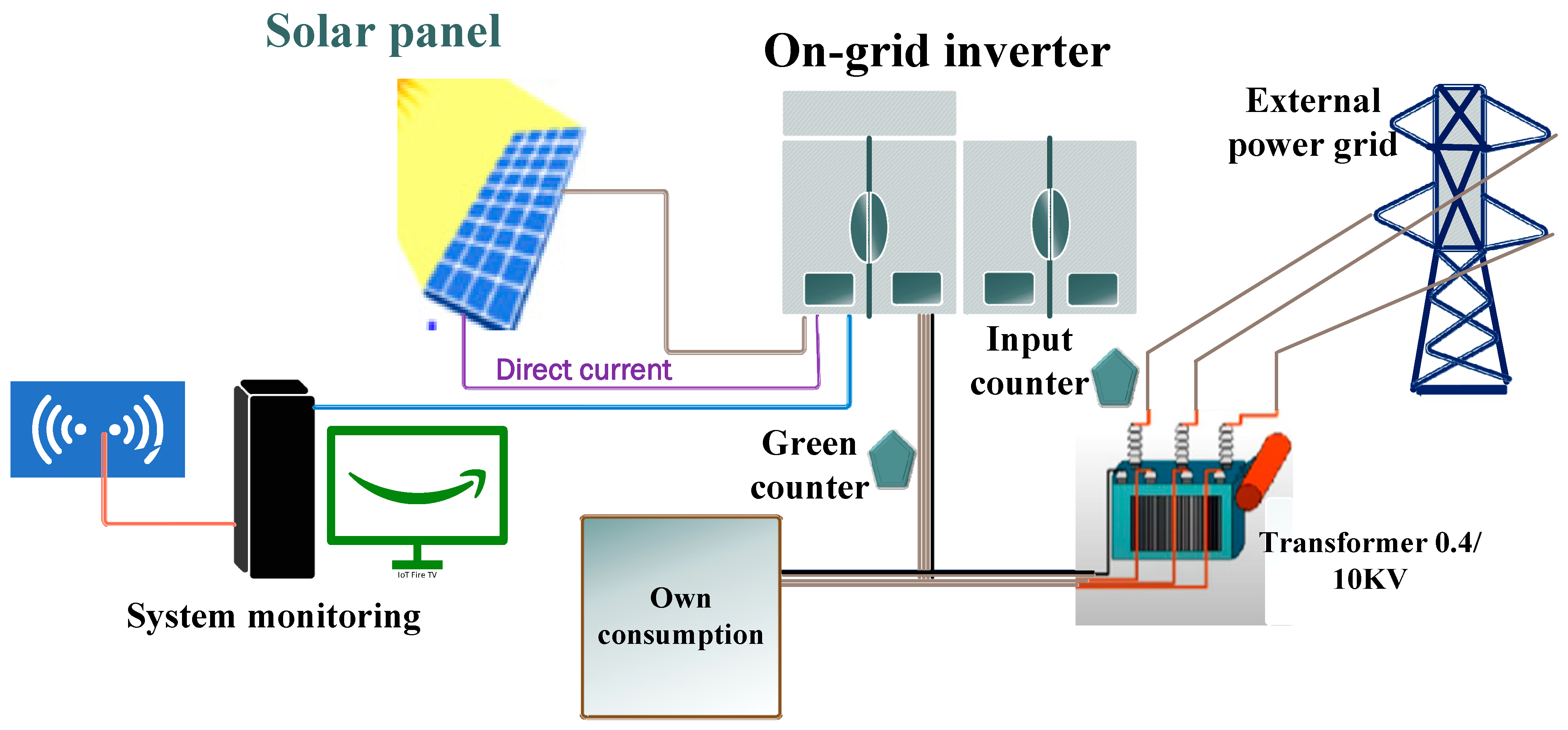

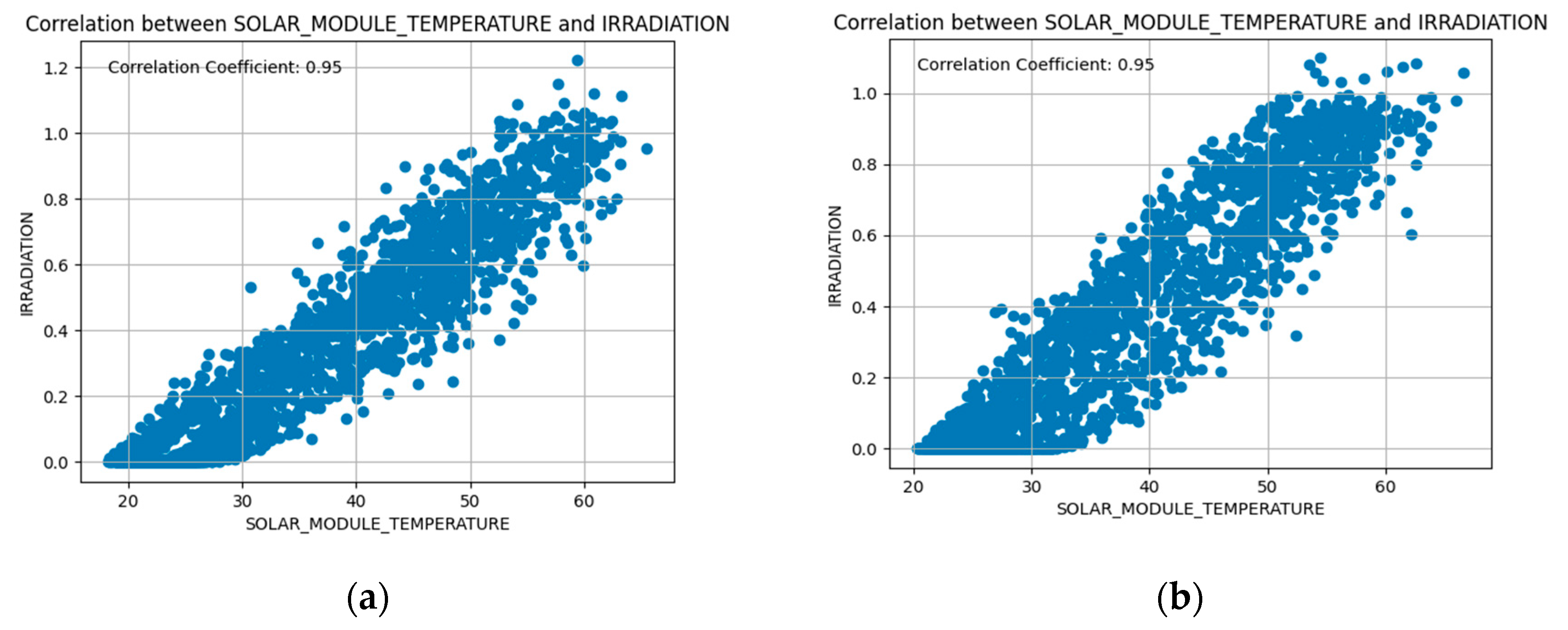
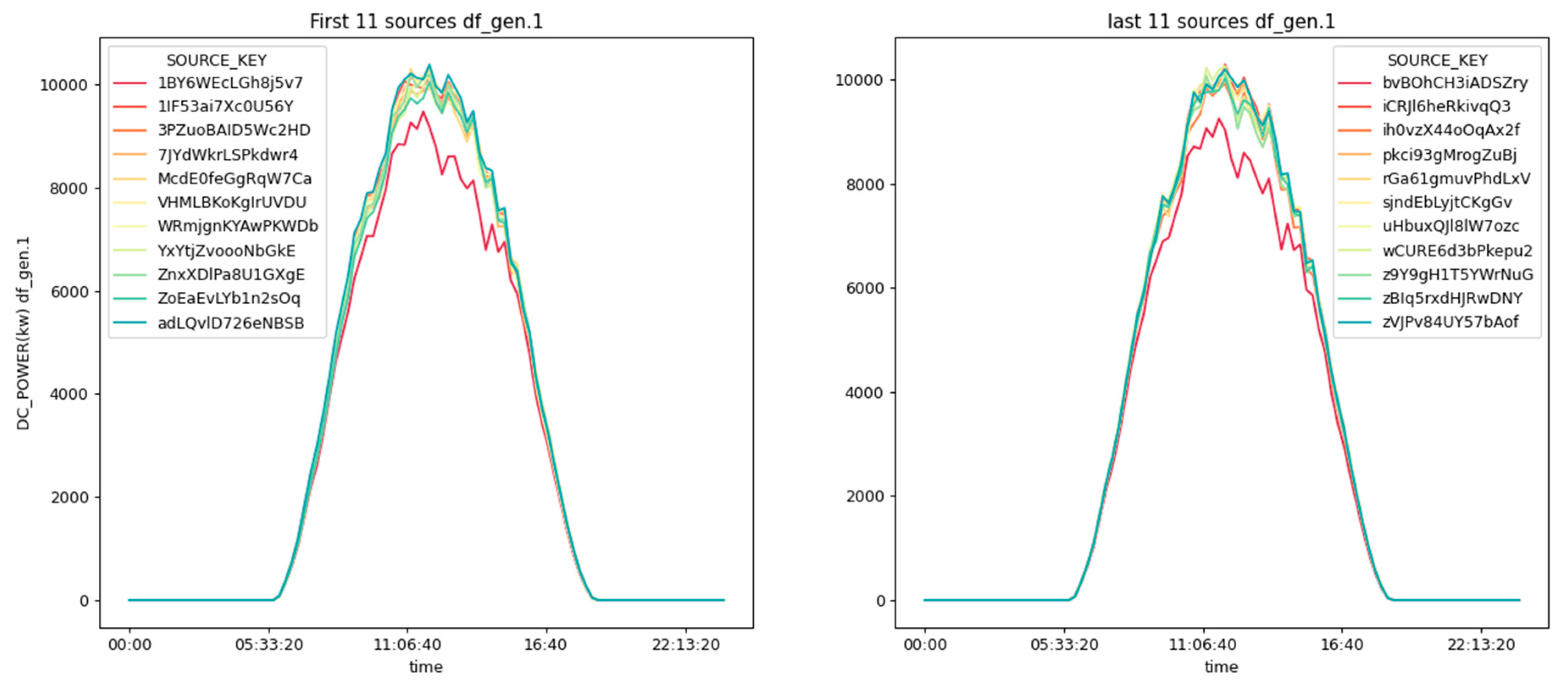
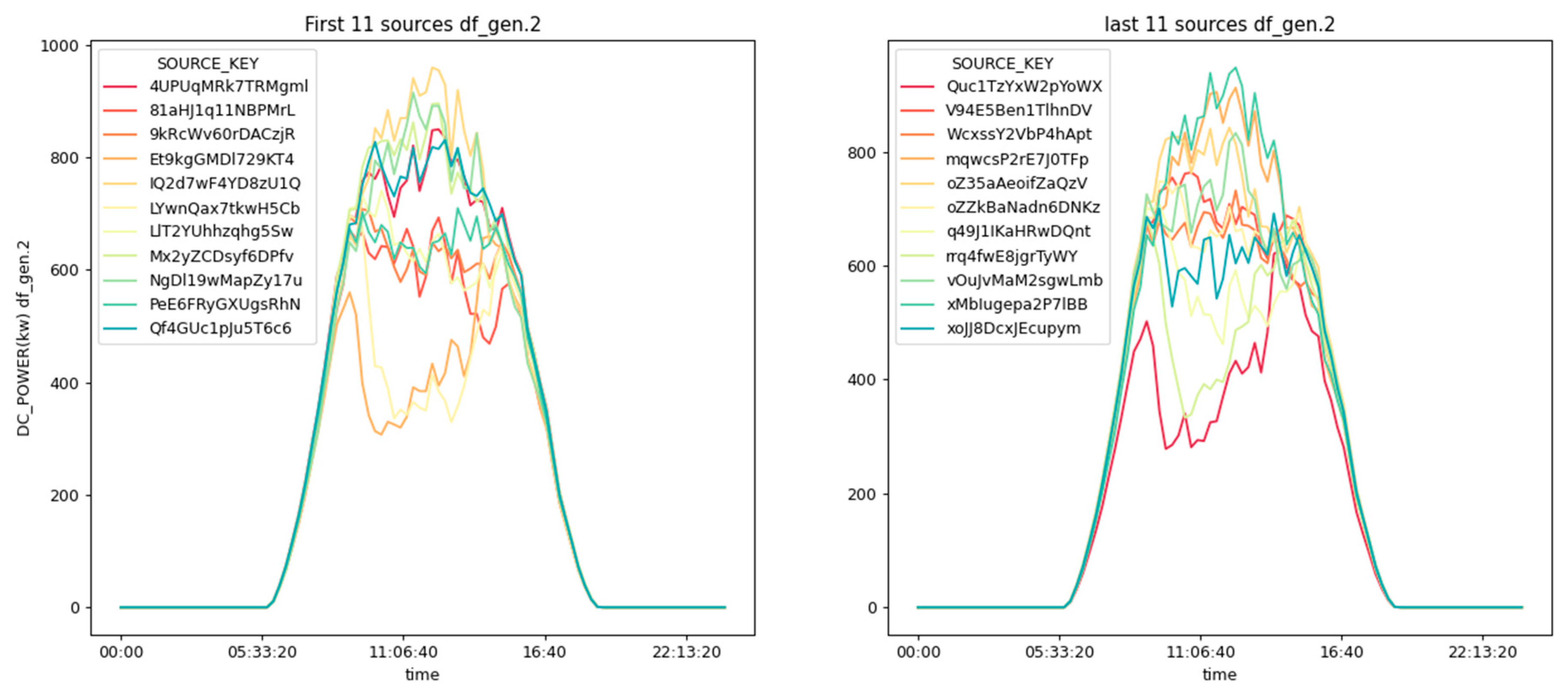
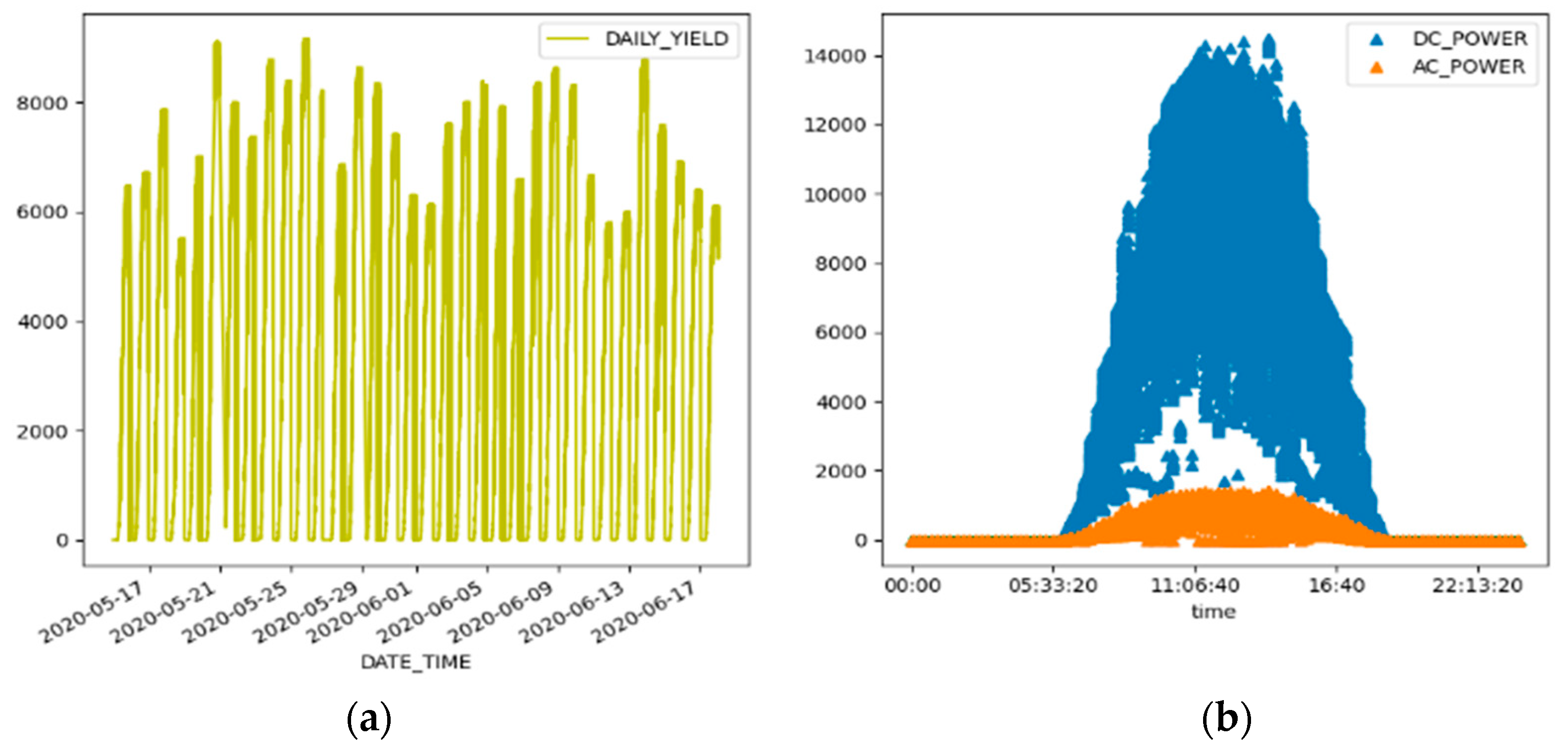
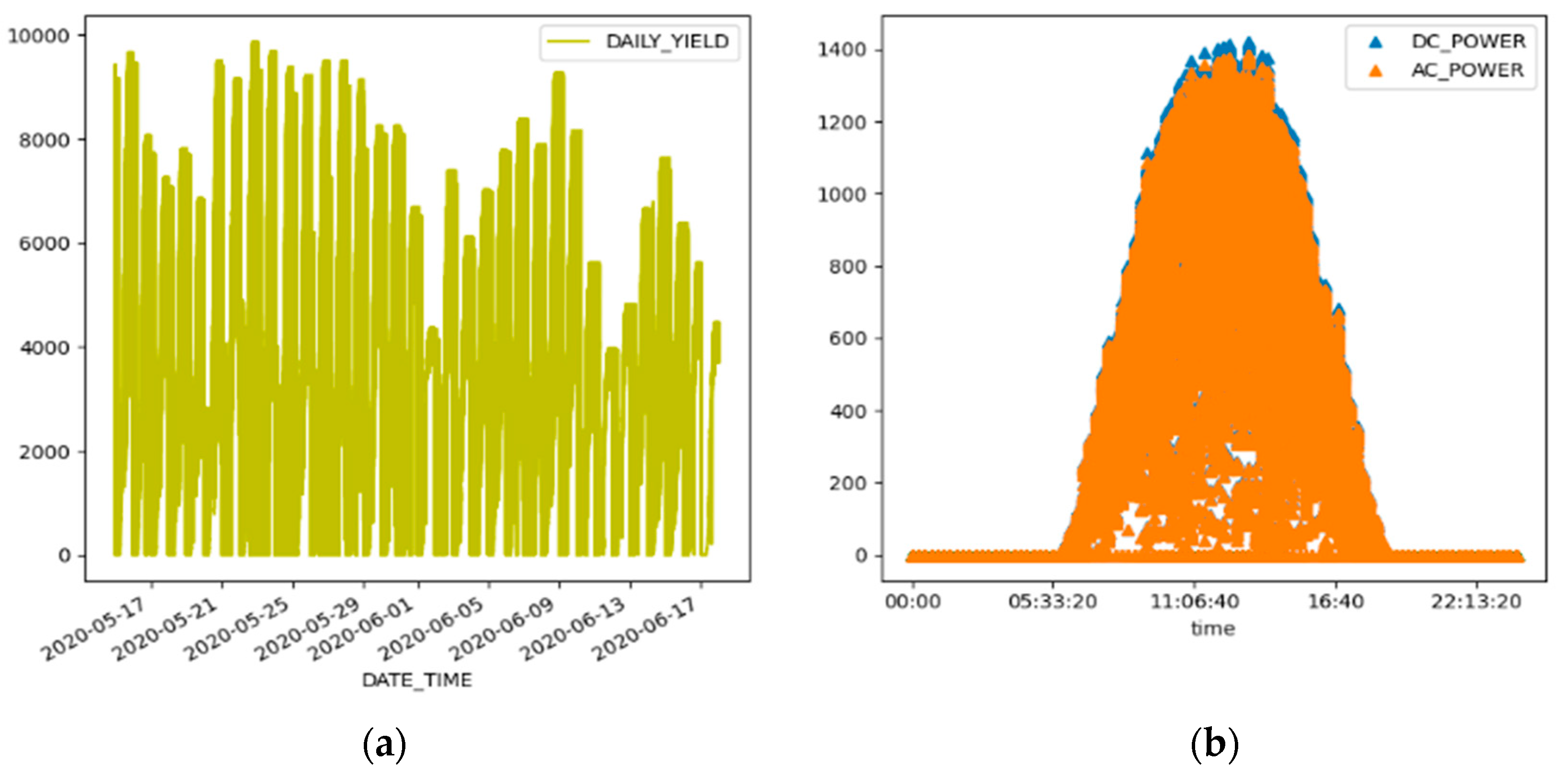
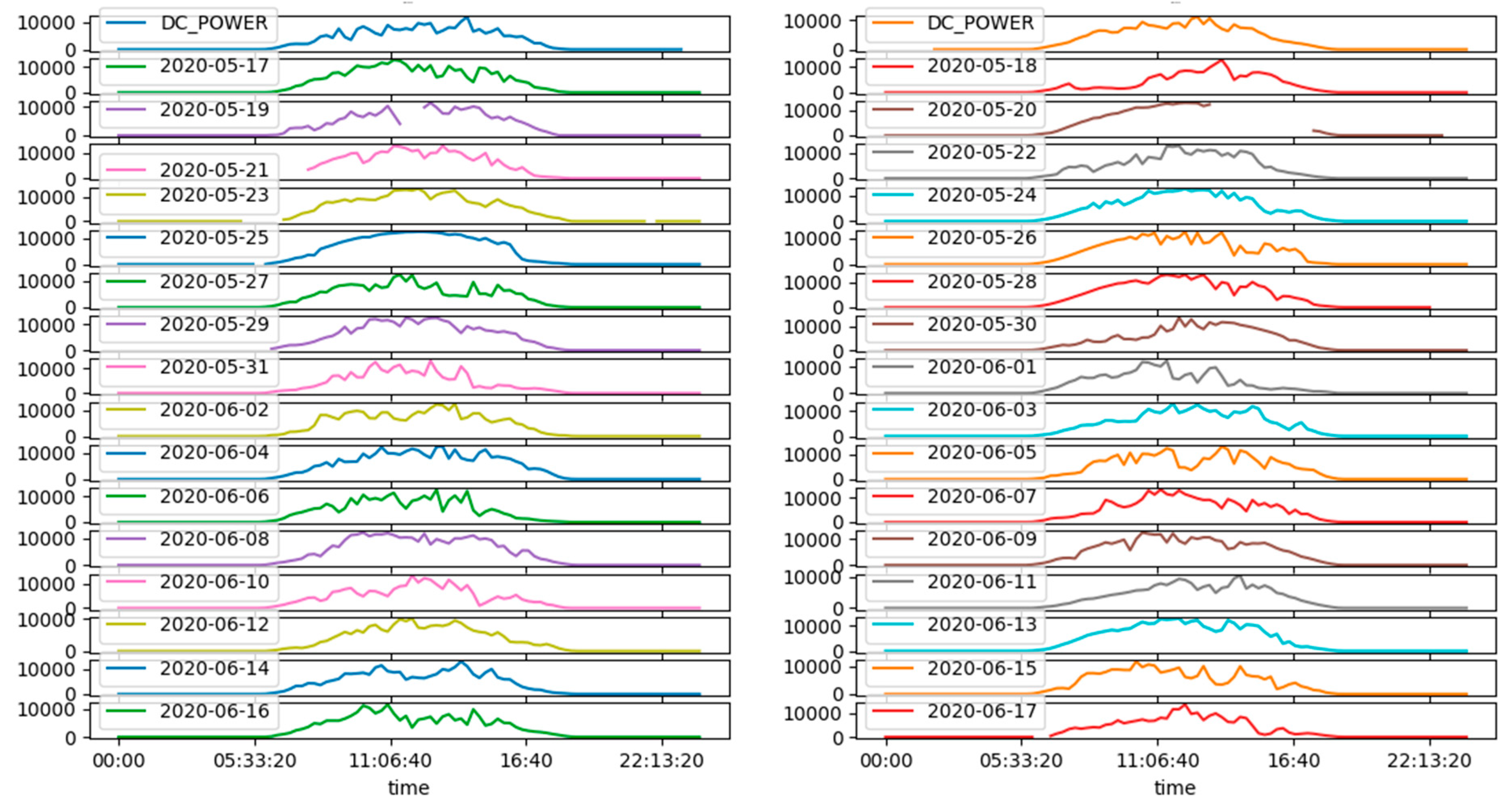
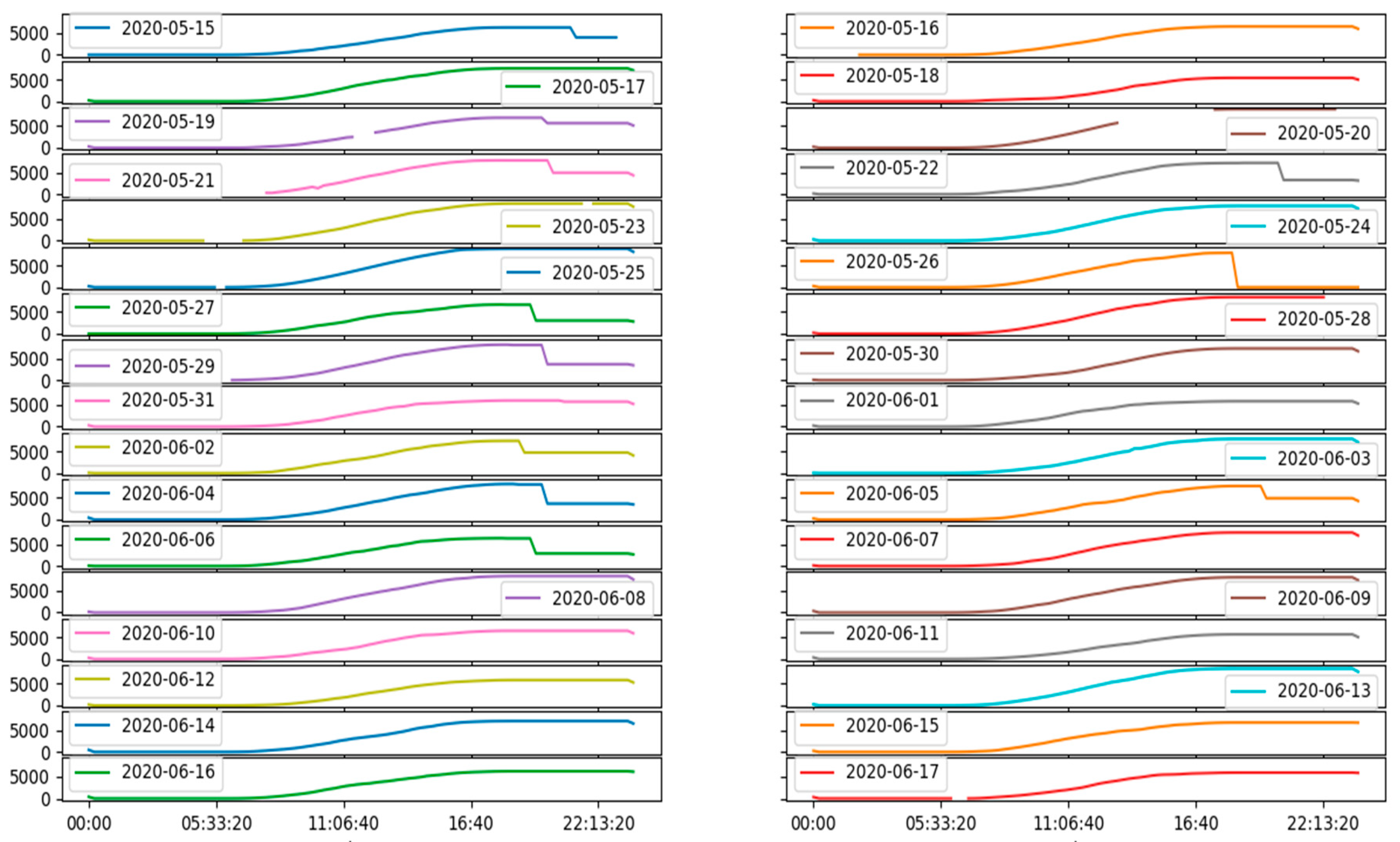
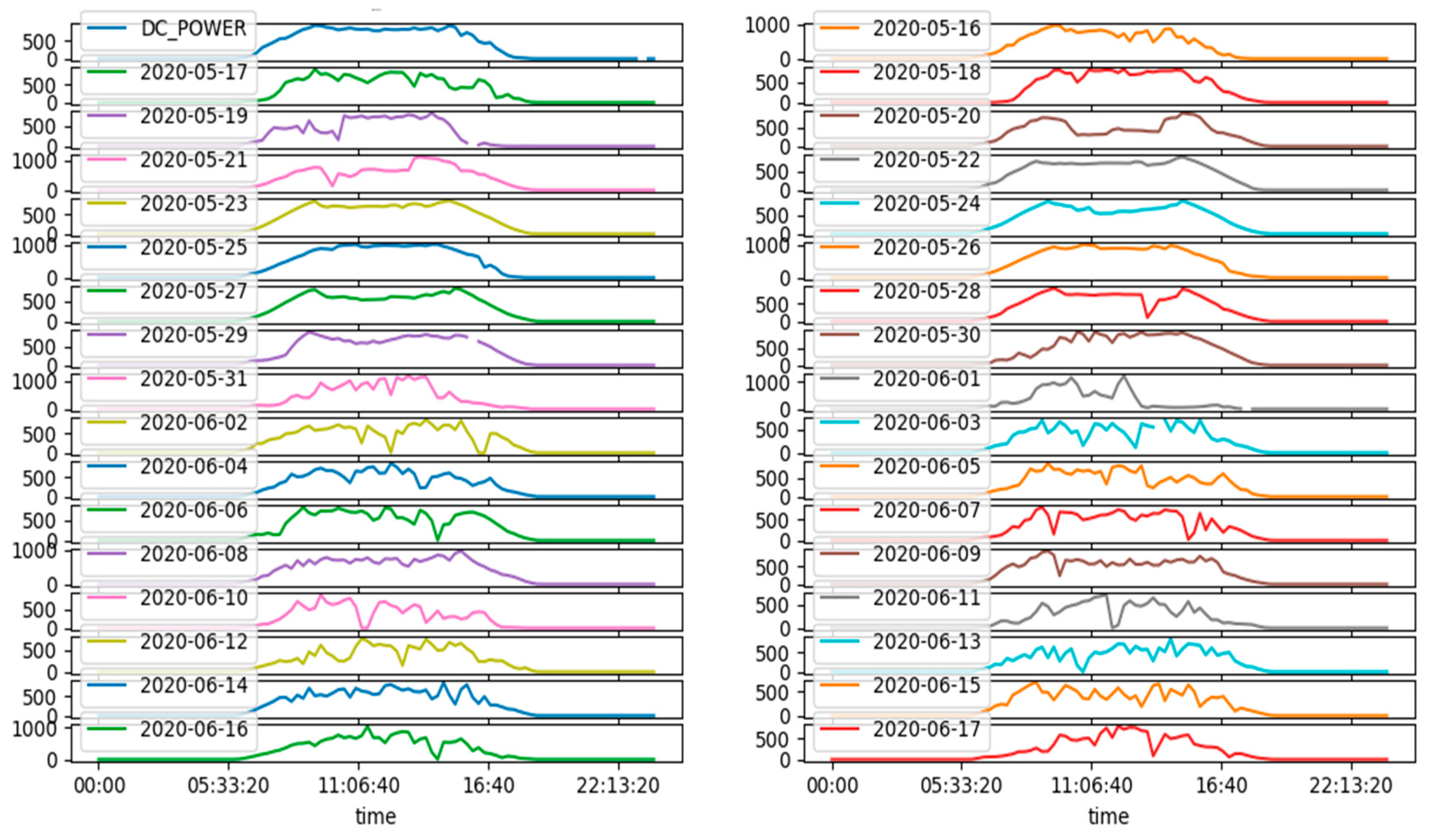
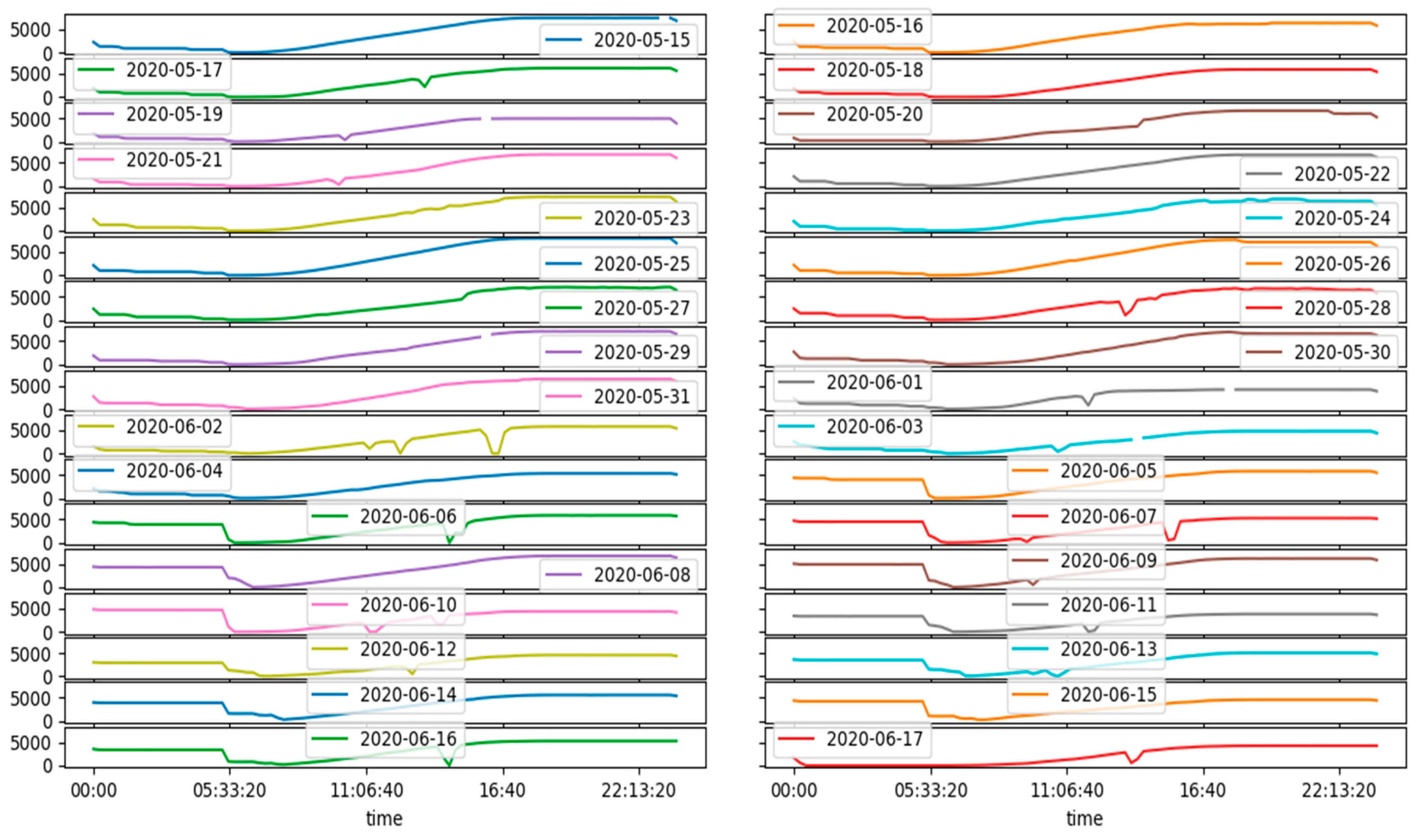
| DC Power (kW) | AC Power (kW) | Daily Yield (kWh) | Total Yield (kWh/day) | |
|---|---|---|---|---|
| Mean | 3147.426211 | 307.802752 | 3295.968737 | 6.978712 × 106 |
| DC Power (kW) | AC Power (kW) | Daily Yield (kWh) | Total Yield (kWh/day) | |
|---|---|---|---|---|
| Mean | 246.701961 | 241.277825 | 3294.890295 | 6.589448 × 108 |
Disclaimer/Publisher’s Note: The statements, opinions and data contained in all publications are solely those of the individual author(s) and contributor(s) and not of MDPI and/or the editor(s). MDPI and/or the editor(s) disclaim responsibility for any injury to people or property resulting from any ideas, methods, instructions or products referred to in the content. |
© 2024 by the authors. Licensee MDPI, Basel, Switzerland. This article is an open access article distributed under the terms and conditions of the Creative Commons Attribution (CC BY) license (https://creativecommons.org/licenses/by/4.0/).
Share and Cite
Li, B.; Fesseha, S.B.; Chen, S.; Zhou, Y. Real-Time Solar Power Generation Scheduling for Maintenance and Suboptimally Performing Equipment Using Demand Response Unified with Model Predictive Control. Energies 2024, 17, 3212. https://doi.org/10.3390/en17133212
Li B, Fesseha SB, Chen S, Zhou Y. Real-Time Solar Power Generation Scheduling for Maintenance and Suboptimally Performing Equipment Using Demand Response Unified with Model Predictive Control. Energies. 2024; 17(13):3212. https://doi.org/10.3390/en17133212
Chicago/Turabian StyleLi, Bin, Samrawit Bzayene Fesseha, Songsong Chen, and Ying Zhou. 2024. "Real-Time Solar Power Generation Scheduling for Maintenance and Suboptimally Performing Equipment Using Demand Response Unified with Model Predictive Control" Energies 17, no. 13: 3212. https://doi.org/10.3390/en17133212







